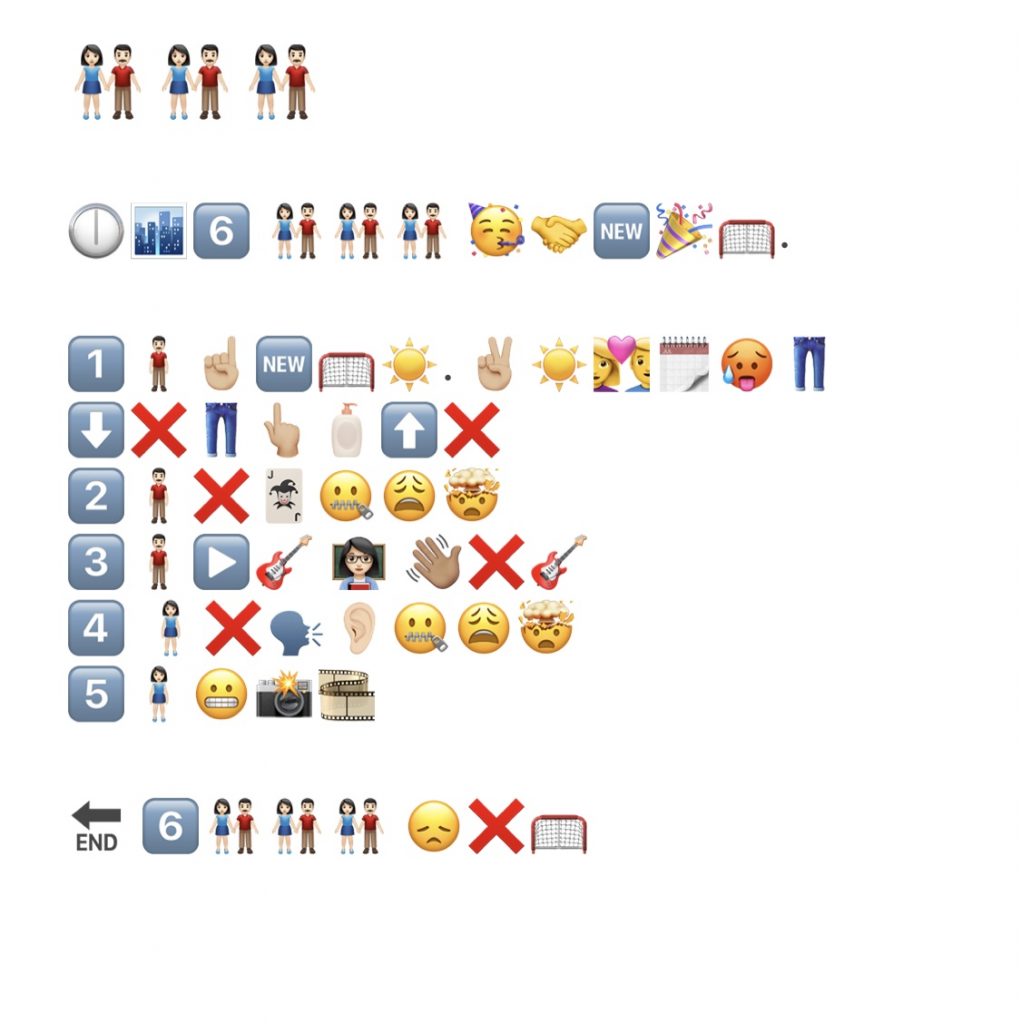 I decided to describe the plot of the last TV show that I watched. It took me a very long time to complete this task. To be honest, I did choose the work based on how easy it would be to visualize. I picked between two TV shows that I recently watched. The episode I chose could be described using many picture words. Even so, this task was tricky. I went through all of the emojis to familiarize myself with them. Initially, I replayed the storyline in my mind and identified the picture words associated with the main events. I chose to begin with the title in order to build some confidence before moving on to the description. I had to think of the important components of the story that should be included in my description. This task made me wish that there were more emojis out there! There were several words that I wanted to include, but I couldn’t find an emoji that represented this word. Throughout this process, I relied more on words than syllables. I started with the basic emojis and added more each time I reviewed it. It just felt simpler to associate words with emojis than to try to focus on linking syllables to them. I found myself thinking of different synonyms of a word in an effort to find an appropriate emoji.
I decided to describe the plot of the last TV show that I watched. It took me a very long time to complete this task. To be honest, I did choose the work based on how easy it would be to visualize. I picked between two TV shows that I recently watched. The episode I chose could be described using many picture words. Even so, this task was tricky. I went through all of the emojis to familiarize myself with them. Initially, I replayed the storyline in my mind and identified the picture words associated with the main events. I chose to begin with the title in order to build some confidence before moving on to the description. I had to think of the important components of the story that should be included in my description. This task made me wish that there were more emojis out there! There were several words that I wanted to include, but I couldn’t find an emoji that represented this word. Throughout this process, I relied more on words than syllables. I started with the basic emojis and added more each time I reviewed it. It just felt simpler to associate words with emojis than to try to focus on linking syllables to them. I found myself thinking of different synonyms of a word in an effort to find an appropriate emoji.
As I was reading through this week’s material and working on creating the emoji story, the popular phrase “a picture is worth a thousand words” entered my mind. In Kress’ “Gains and Losses: New forms of texts, knowledge, and learning”, we encounter two figures representing a girl, Georgia and her parents. In the two pictures, the way Georgia is positioned paints a very different picture about her relationship with her parents. This stood out to me because it signifies the amount an individual can infer simply by looking at a picture. Kress (2005) mentions that unlike words that are vague, general, and empty of meaning, depictions are full of meaning because they are so precise and specific. Based on my own experience with the weekly task, I didn’t think that emojis were as effective as words would have been in describing the plot of the chosen TV show. Perhaps this can be attributed to the absence of certain emojis that I felt I required. Nonetheless, I think that you can still piece a few elements of the storyline together. I had four of my family members guess which show/episode I was describing, and only one of them was able to figure it out.
Kress (2005), Gains and losses: New forms of texts, knowledge, and learningLinks to an external site.. Computers and Composition, Vol. 2(1), 5-22.